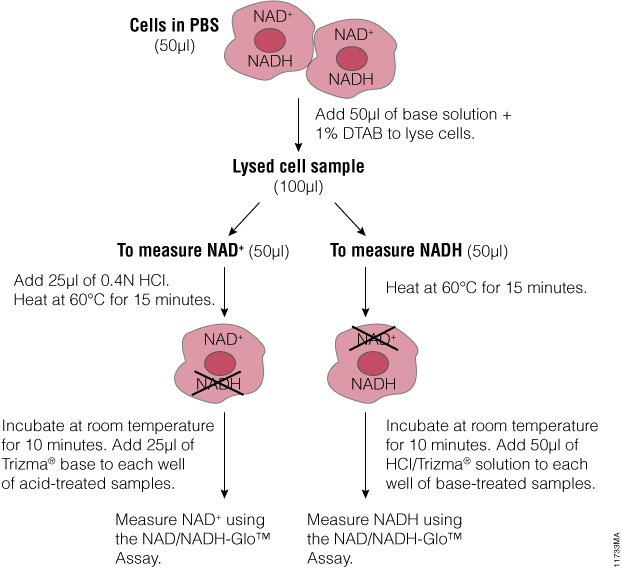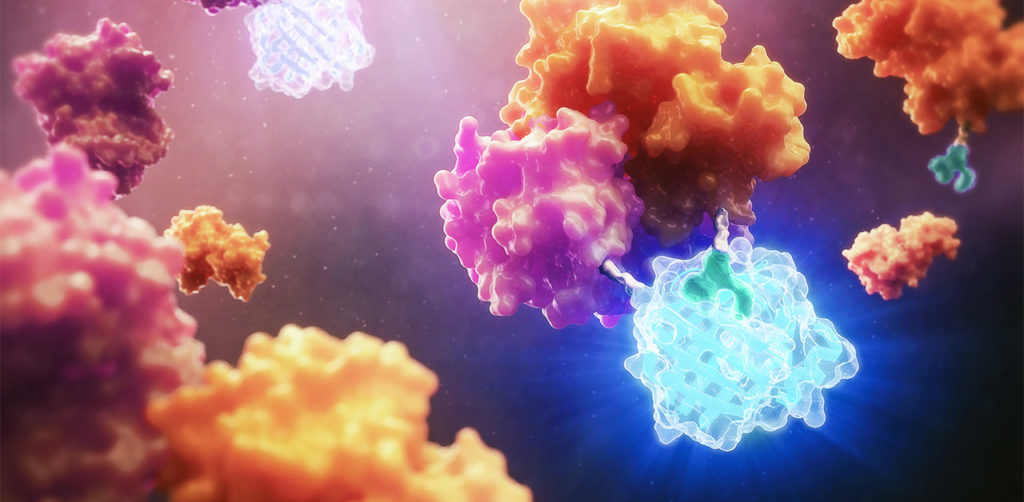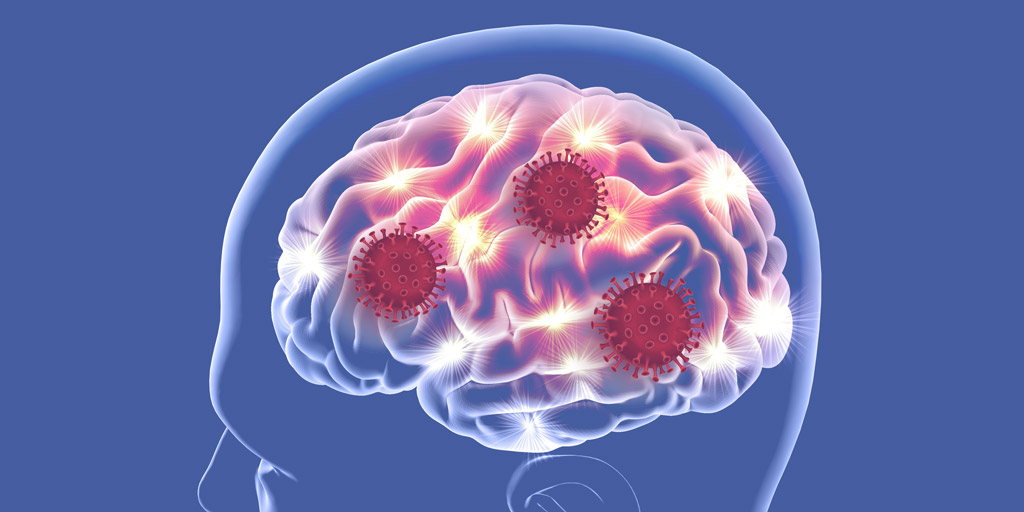This blog was written by Sebastien Smick, Research Technician in Dr. Jacquin Niles’ laboratory at Massachusetts Institute of Technology (MIT)
Our lab is heavily focused on the basic biology and drug discovery of the human bloodborne pathogen Plasmodium falciparum, which causes malaria. We use the CRISPR/Cas9 system, paired with a TetR protein fused to a native translational repressor alongside a Renilla luciferase reporter gene, to conditionally knock down genes of interest to create modified parasites. We can then test all kinds of compounds as potential drug scaffolds against these gene-edited parasites. Our most recent endeavor, one made possible by Promega, is a medium-low throughput robotic screening pipeline which compares conditionally-activated or-repressed parasites against our dose-response drug libraries in a 384-well format. This process has been developed over the past few years and is a major upgrade for our lab in terms of data production. Our researchers are working very hard to generate new modified parasites to test. Our robots and plate readers rarely get a day’s rest!
Microorganisms: Infectious Disease and Ecology
Blog entries about bacteria, viruses, fungi and other microorganisms.
NAD: A Renaissance Molecule and its Role in Cell Health
NAD is a pyridine nucleotide. It provides the oxidation and reduction power for generation of ATP by mitochondria. For many years it was believed that the primary function of NAD/NADH in cells was to harness and transfer energy from glucose, fatty and amino acids through pathways like glycolysis, beta-oxidation and the citric acid cycle.

However NAD also is recognized as an important cell signaling molecule and substrate. The many regulatory pathways now known to use NAD+ in signaling include multiple aspects of cellular homeostasis, energy metabolism, lifespan regulation, apoptosis, DNA repair and telomere maintenance.
This resurrection of NAD importance is due in no small part to the discovery of NAD-using enzymes, especially the sirtuins.
Continue reading “NAD: A Renaissance Molecule and its Role in Cell Health”A SARS-CoV-2 NanoLuc® Reporter Virus for Rapid Screening of Antivirals

Before the COVID-19 global pandemic began, Dr. Xuping Xie, Assistant Professor of the University of Texas Medical Branch at Galveston, TX has been studying viruses, such as Dengue and Zika, for more than 10 years. Once the pandemic hit in early 2020, he was prepared to join the fight against the virus. “There was an urgent need to know: Is there a quicker way to develop therapeutics or antibodies to target SARS-CoV-2?” says Dr. Xie. “That’s why we immediately launched our SARS-CoV-2 project.”
His goal was to create an assay that could 1) screen for antiviral drugs and 2) quickly measure neutralizing antibody levels. The assay could be used to determine the immune status of previously infected individuals and to evaluate various vaccines under development. To achieve this, he wanted to create a reporter virus that is genetically stable and replicates similarly to the wild-type virus in cell culture.
Continue reading “A SARS-CoV-2 NanoLuc® Reporter Virus for Rapid Screening of Antivirals”Firefly Luciferase Sheds Light on Development of New Malaria Treatments

Despite significant advancements in antimalarial drugs and widespread efforts to prevent transmission over the past decade, deaths from malaria remain high, particularly in younger children. New drugs with novel modes of action are urgently needed to continue reducing mortality and address drug resistance in the malaria parasite, Plasmodium falciparum. While tens of thousands of compounds have been identified as potential candidates through massive screening efforts, scalable methods for identifying the most effective compounds are needed.
The goal is to find a drug that is potent during all stages in the life cycle of P. falciparum and kills the parasite quickly. Focusing on assessing whether a compound can rapidly eliminate initial parasite burden, Paul Horrocks, PhD, and his colleagues developed a validated bioluminescence-based assay that rapidly determines the initial rate of kill for discovery antimalarials. One key to developing their assay was figuring out how to monitor when the parasite dies after introducing the drug. While measuring DNA content can be used to monitor parasite burden, it is too stable to use for a relevant time course assay.
Enter firefly luciferase, a dynamic reporter tool to investigate drug action. By creating transgenic P. falciparum that express the luc reporter gene, the researchers could monitor drug action over time. When the parasite is killed, it stops making the luciferase reporter. Since there is no new production of luciferase, levels fall quickly after the parasite dies, and a luciferase assay can determine how fast each drug killed the parasite.
Continue reading “Firefly Luciferase Sheds Light on Development of New Malaria Treatments”Fighting Plant Pathogens Worldwide with the Maxwell® RSC PureFood GMO and Authentication Kit
Among the one trillion or so species that share space on our planet, complex relationships have emerged over time. Such relationships, in which two or more species closely interact, are collectively termed symbiosis. Although it’s commonly assumed that symbiotic relationships are mutually beneficial, this example constitutes only one type of symbiosis (known as mutualism). The traditional predator-prey relationship, clearly a one-sided arrangement, is also an example of symbiosis.

The sheer diversity of microbial species has led to the development of many well-characterized relationships with plants and animals. Perhaps the best-known example of mutualism in this context is the process of nitrogen fixation. In this process, various types of bacteria that live in water, soil or root nodules convert atmospheric nitrogen into forms that are readily used by plants. On the other hand, some types of bacteria-plant relationships are parasitic: the bacteria rely on the plant for survival but end up damaging their host. Parasitic relationships can have devastating ecological and economic consequences when they affect food crops.
Continue reading “Fighting Plant Pathogens Worldwide with the Maxwell® RSC PureFood GMO and Authentication Kit”Your Brain on COVID-19: Neurotropic Properties of the SARS-CoV-2 Virus
Updated 4/29/2022 by AnnaKay Kruger

Viruses are both fascinating and terrifying. Stealthy, insidious and often deadly, they turn our own cells against us. Over the past year, we have all had a firsthand view of what a new and unknown virus can do. The SARS-CoV-2 virus has caused a global pandemic, and left scientists and medical professionals scrambling to unravel its mysteries and find ways to stop it.
COVID-19 is considered a respiratory disease, but we know that the SARS-CoV-2 virus can affect other systems in the body including the vascular and central nervous systems. In fact, some of the most noted symptoms of SARS-CoV-2 infection, headache, and the loss of the sense of taste and smell, are neurological— not respiratory— symptoms.
Continue reading “Your Brain on COVID-19: Neurotropic Properties of the SARS-CoV-2 Virus”Bioluminescence and Biotechnology: Shining Nature’s Cool Light on Biology
Imagine you’re taking a refreshing night swim in the warm blue waters of Vieques in Puerto Rico. You splash into the surf and head out to some of the deeper waters of the bay, when what to your wondering eyes should appear, but blue streaks of light in water that once was clear. Do you need to get your eyes checked? Are you hallucinating? No! You’ve just happened upon a cluster of dinoflagellates, harmless bioluminescent microorganisms called plankton, that emit their glow when disturbed by movement. These dinoflagellates are known to inhabit waters throughout the world but are generally not present in large enough numbers to be noticed. There are only five ecosystems in the world where these special bioluminescent bays can be seen, and three of them are in Puerto Rico.

But you don’t have to travel to Puerto Rico or swim with plankton to see bioluminescence. There are bioluminescent organisms all over the world in many unexpected places. There are bioluminescent mushrooms, bioluminescent sea creatures—both large and small (squid, jellyfish, and shrimp, in addition to the dinoflagellates)—and bioluminescent insects, to name a few. Bioluminescence is simply the ability of living things to produce light.
Continue reading “Bioluminescence and Biotechnology: Shining Nature’s Cool Light on Biology”Barking Up the Right Tree: Using NanoLuc to Screen for Canine Distemper Antivirals

Canine distemper virus (CDV) is a highly contagious pathogen that is the etiological agent responsible for canine distemper (CD), a systemic disease that affects a broad spectrum of both domestic dogs and wild carnivores. While there are commercially available vaccines for CDV that can provide immunity in vivo and protect canines from contracting CD, there is a strong demand for effective canine distemper antivirals to combat outbreaks. Such drugs remain unavailable to date, largely due to the laborious, time-consuming nature of methods traditionally used for high-throughput drug screening of anti-CDV drugs in vitro. In a recent study published in Frontiers in Veterinary Science, researchers demonstrated a new tool for rapid, high-throughput screening of anti-CDV drugs: a NanoLuc® luciferase-tagged CDV.
Continue reading “Barking Up the Right Tree: Using NanoLuc to Screen for Canine Distemper Antivirals”Targeting Glioblastoma Cells by Packaging a Lentiviral Vector Inside a Zika Virus Coat
A recent article published in Cancers demonstrates a new method for targeting glial cells using a lentiviral packaging system that incorporated Zika virus envelope proteins. By using the reporter gene firefly luciferase, researchers demonstrated that a pseudotyped virus could infect cultured glioblastoma cells.
Introduction

Viruses enjoy a fearsome reputation. SARS-CoV-2 is only the latest infectious agent that has garnered attention by becoming a worldwide pandemic. Even the viral name suggests that SARS-CoV-2 was not the first of its type [SARS-CoV is the virus behind the severe acute respiratory syndrome (SARS) that spread worldwide in the early 2000s]. There are many different families of viruses (e.g., coronavirus for SARS-CoV-2 or lentiviruses for HIV-1) and each show a preference to the cell types they want to infect. By investigating the life cycle of viruses to better understand their mechanisms, researchers can discover new opportunities that may be exploited.
In 2015 and 2016, the virus that concerned health authorities was Zika virus (ZIKV). While this virus generally caused mild disease, the babies of women who were infected during pregnancy were at increased risk for microcephaly and other brain defects. These defects were traced back to Zika virus infecting nerve tissue, specifically, glial cells. This discovery provided an opportunity to explore how Zika virus might affect the brain tumor, glioblastoma multiforme (GMB), especially the glioblastoma stem cells (GSCs) that resist conventional treatment and contribute to the poor prognosis for GMB. Studies suggested that Zika virus infection prolonged survival in animal glioma models and selectively killed GSC with minimal effects on normal cells. In fact, the molecules used by ZIKV to enter cells were predominantly found on tumors, not normal cells. Knowing that the ZIKV envelope proteins prM and E provide the target specificity for glial cells, Kretchmer et al. wanted to explore if ZIKV envelope proteins substituted in lentivirus packaging systems would be able to enter glioblastoma cells.
Continue reading “Targeting Glioblastoma Cells by Packaging a Lentiviral Vector Inside a Zika Virus Coat”Automation Helps A Graduate Student Monitor COVID-19 With Wastewater

When Kasia Slipko started graduate school at Vienna University of Technology, Institute for Water Quality and Resource Management, she was interested in studying antibiotic resistant microbes in wastewater. For three years, she evaluated different wastewater treatment methods to find out how to remove antibiotic resistant bacteria. But in the spring of 2020, her research took an unexpected turn. That was when the COVID-19 global pandemic hit, caused by the rapid spread of the SARS-CoV-2 virus. Kasia soon found herself at the forefront of another exciting field: using wastewater to monitor viral disease outbreaks.
Continue reading “Automation Helps A Graduate Student Monitor COVID-19 With Wastewater”